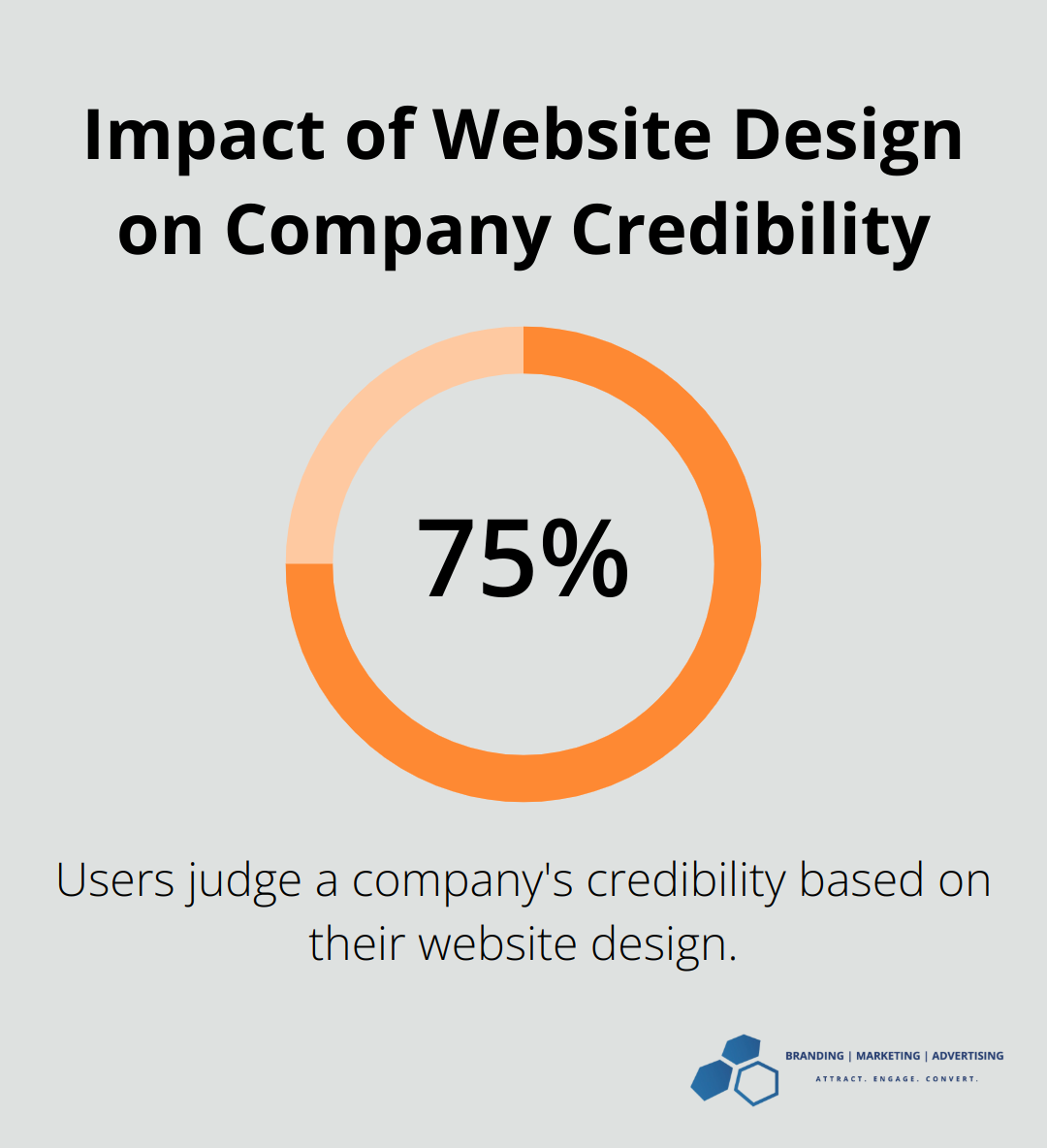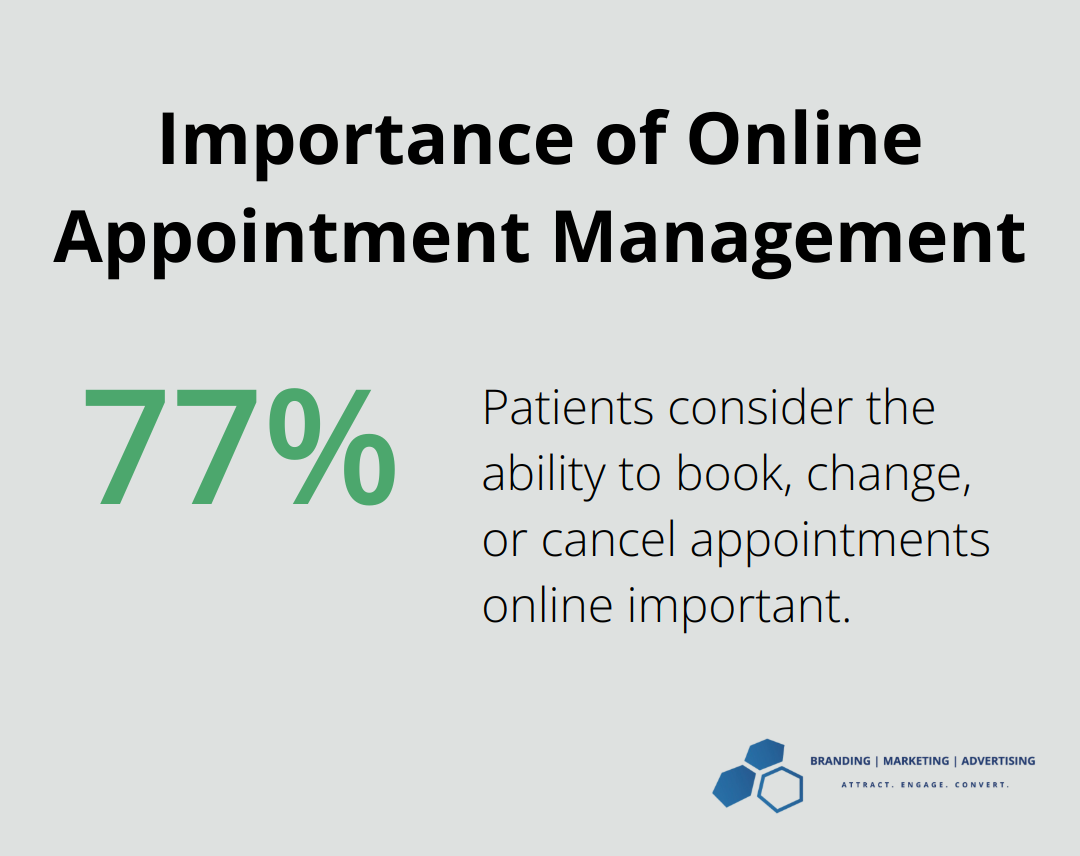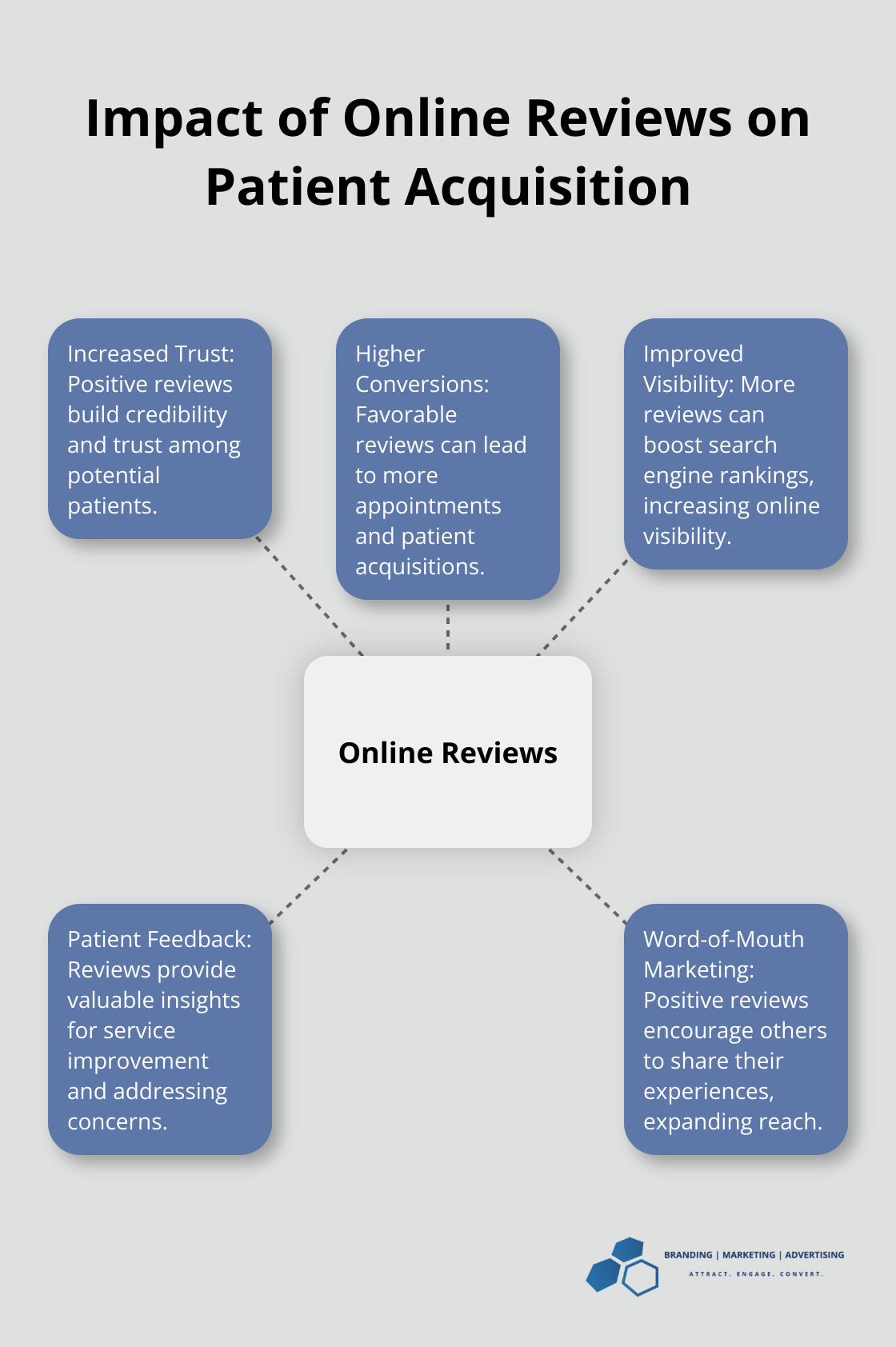How to Market Your Healthcare Organization Effectively
At Branding | Marketing | Advertising, we understand the unique challenges healthcare organizations face in today’s competitive landscape.
Effective marketing for healthcare organizations is essential to attract patients, build trust, and grow your practice. This blog post will guide you through proven strategies to market your healthcare organization successfully.
From digital tactics to traditional outreach methods, we’ll explore how to showcase your unique value proposition and connect with your target audience.
What’s Your Healthcare Organization’s Unique Value?
In the competitive healthcare landscape, standing out is essential. A well-defined unique value proposition (UVP) can transform a healthcare organization’s marketing efforts.
Pinpoint Your Strengths
Start with a thorough internal assessment. What makes your healthcare organization special? You might have cutting-edge technology, a team of renowned specialists, or a patient-centered approach that goes above and beyond. For example, a pediatric clinic with a play-based approach to treatments has a unique strength worth highlighting.
Use data to identify your strengths. Analyze patient feedback, review your success rates, and compare your services to competitors. This process often reveals strengths you might have overlooked. You might discover that your average wait time is significantly lower than the industry standard – a key differentiator in patient satisfaction.
Know Your Audience Inside Out
Understanding your target audience is key for effective healthcare marketing. Examine demographics, psychographics, and behavioral patterns of your patient base. Use tools like Google Analytics to gather data on who visits your website and engages with your content.
Create patient personas – detailed profiles of your ideal patients. These personas should include age, occupation, health concerns, and preferred communication channels. For example, a persona for a family practice might be “Busy Mom Sarah,” a 35-year-old working mother who values convenience and quick, quality care for her children.
Set Yourself Apart
After you understand your strengths and audience, it’s time to differentiate. Your UVP should clearly communicate why patients should choose you over competitors. Be specific and focus on benefits, not just features.
Instead of saying “We have state-of-the-art MRI machines,” you could say “Get accurate diagnoses faster with our advanced MRI technology – reducing your wait time and stress.”
Your UVP isn’t just about services – it’s about the entire patient experience. Do you offer extended hours? Virtual consultations? A serene, spa-like environment? These factors can be powerful differentiators.
Communicate Your Value Clearly
Your UVP should appear across all your marketing materials – from your website to your brochures. Use clear, jargon-free language that speaks directly to your patients’ needs and concerns.
For example, if your UVP focuses on personalized care, your website might feature patient stories showcasing how your tailored approach improved their health outcomes. Or, if you’re highlighting technological advancements, create video content demonstrating how these innovations benefit patients.
Test and Refine
Your UVP isn’t set in stone. As the healthcare landscape evolves and patient needs change, so should your value proposition. Regularly gather patient feedback and monitor industry trends to ensure your UVP remains relevant and compelling.
Try A/B testing different versions of your UVP on your website or in email campaigns. This data-driven approach can help you fine-tune your messaging for maximum impact.
A clear and effective UVP will not only attract more patients but also build stronger, lasting relationships with them. In healthcare marketing, authenticity and trust are paramount. Your value proposition should reflect not just what you do, but why you do it and how you make a difference in your patients’ lives.
Now that you’ve defined your unique value, it’s time to develop a comprehensive digital marketing strategy to showcase it effectively. Let’s explore how to create a strong online presence that resonates with your target audience and drives patient engagement.
How to Build a Powerful Digital Marketing Strategy
In today’s digital age, a robust online presence is essential for healthcare organizations. A well-crafted digital marketing strategy can significantly boost patient engagement and establish your organization as a trusted healthcare provider.
Create a User-Friendly Website
Your website often serves as the first point of contact for potential patients. It should be intuitive, informative, and accessible. A Stanford University study reveals that 75% of users judge a company’s credibility based on their website design. Make sure your site loads quickly, adapts to mobile devices, and provides easy navigation.

Include clear calls-to-action (CTAs) for appointment booking, contact information, and service details. Implement online appointment scheduling to streamline the patient experience. An Accenture study found that 77% of patients consider the ability to book, change, or cancel appointments online important.

Master Search Engine Optimization
Search Engine Optimization plays a vital role in increasing your online visibility. Incorporating E-E-A-T into your SEO strategy not only improves your site’s ranking but also builds trust with patients and other stakeholders.
Optimize your website’s content, meta descriptions, and headers with these keywords. Create location-specific pages if you have multiple offices. (According to BrightLocal, 46% of all Google searches look for local information.)
Build high-quality backlinks through guest posting, local business directories, and partnerships with other healthcare providers. Google considers backlinks as votes of confidence, boosting your site’s authority and search rankings.
Leverage Social Media Effectively
Social media platforms offer excellent opportunities for patient engagement and education. Choose platforms where your target audience is most active. For instance, Facebook attracts older adults, while Instagram and TikTok appeal to younger demographics.
Share valuable health tips, behind-the-scenes content, and patient success stories (with consent). Respond promptly to comments and messages to build trust and show attentiveness. (Sprout Social reports that 40% of consumers expect brands to respond within the first hour of reaching out on social media.)
Use social media advertising to reach specific demographics. This can improve engagement between healthcare providers and patients.
Establish Thought Leadership Through Content Marketing
Content marketing serves as a powerful tool for showcasing your expertise and providing value to potential patients. Create a blog on your website and regularly publish informative articles on health topics relevant to your audience.
Diversify your content formats. Include videos, infographics, and podcasts to cater to different learning preferences. HubSpot reports that 54% of consumers want to see more video content from brands they support.
Consider creating a newsletter to keep your audience engaged and informed about your services and health tips. Email marketing has an average ROI of $42 for every $1 spent, according to the Data & Marketing Association.
Try to optimize your content for voice search. With the rising popularity of smart speakers, more people use voice commands for health-related queries. Focus on natural language and question-based keywords.
These strategies will help you create a strong digital presence that attracts and engages patients effectively. However, digital marketing is just one piece of the puzzle. Traditional marketing techniques can complement your online efforts and help you reach a broader audience. Let’s explore how to implement these traditional methods in the next section.
How Traditional Marketing Boosts Your Healthcare Organization
Traditional marketing techniques remain powerful tools for healthcare organizations, complementing digital efforts and enhancing visibility and patient engagement. This chapter explores effective traditional marketing strategies that can significantly impact your healthcare organization’s success.
Community Outreach: Face-to-Face Trust Building
Community outreach programs allow healthcare organizations to connect directly with potential patients and establish themselves as trusted local resources. Research shows that outreach efforts can lead to fewer hospital readmissions, less use of emergency rooms, and an overall rise in preventive service usage.
Host health fairs or screening events in your local area. These events provide free or low-cost health services while showcasing your expertise. For example, a dental practice might offer free oral cancer screenings, demonstrating their commitment to community health while attracting potential patients.
Participate in local events such as charity runs or community festivals. This visibility helps build brand awareness and shows your organization’s commitment to the community’s well-being.
Partnerships: Reach Amplification
Strategic partnerships can exponentially increase your healthcare organization’s visibility. Collaborate with local businesses, schools, or non-profit organizations that align with your mission.
A pediatric clinic might partner with local schools to provide health education sessions. This not only positions the clinic as a child health expert but also introduces the practice to numerous potential patients.
Sponsorships of local sports teams or community events can also boost visibility.
Patient Referrals: Word-of-Mouth Power
Patient referrals remain one of the most powerful marketing tools in healthcare. Online reviews can be your health system’s most powerful patient acquisition tool. Learn how to manage them to drive more conversions.

Implement a formal referral program. Offer incentives like discounted services or small gifts to patients who refer new clients. However, ensure your program complies with healthcare regulations. (Branding | Marketing | Advertising can help you design a compliant and effective referral program.)
Train your staff to ask for referrals at appropriate times, such as after a successful treatment or during a follow-up call. The key is to make the request when patients are most likely to have positive feelings about your services.
Print and Broadcast: Wider Audience Reach
While digital marketing is important, traditional media still holds significant value, especially for reaching older demographics.
Consider targeted print ads in local newspapers or health-focused magazines. These can be particularly effective for promoting specific services or events. For instance, a fertility clinic might advertise in parenting magazines to reach couples planning to start a family.
Radio ads can effectively reach commuters and stay top-of-mind. Use radio to promote time-sensitive offers or to build brand awareness through consistent messaging.
The key to successful traditional marketing is integration with your digital efforts. Effective marketing specializes in creating cohesive marketing strategies that blend traditional and digital techniques for maximum impact. Leveraging both creates a comprehensive marketing approach that reaches patients across multiple touchpoints, reinforcing your message and building strong relationships with your community.
Final Thoughts
Marketing for healthcare organizations requires a multifaceted approach that combines digital innovation with traditional outreach methods. A robust digital marketing strategy is essential in today’s connected world, while traditional marketing techniques remain powerful for building personal connections. The key to success lies in the integration of these digital and traditional approaches to reach patients across multiple touchpoints.
Healthcare organizations must continually evaluate and adapt their marketing efforts as the landscape and patient expectations evolve. Regular analysis of marketing performance allows organizations to refine strategies and allocate resources effectively. This proactive approach ensures that healthcare providers stay ahead in a competitive market.
At Branding | Marketing | Advertising, we create comprehensive marketing strategies tailored to healthcare organizations. Our team helps navigate the complexities of healthcare marketing (ensuring your organization thrives in this competitive landscape). Visit our website to learn how we can elevate your healthcare marketing efforts and drive real results for your organization.












